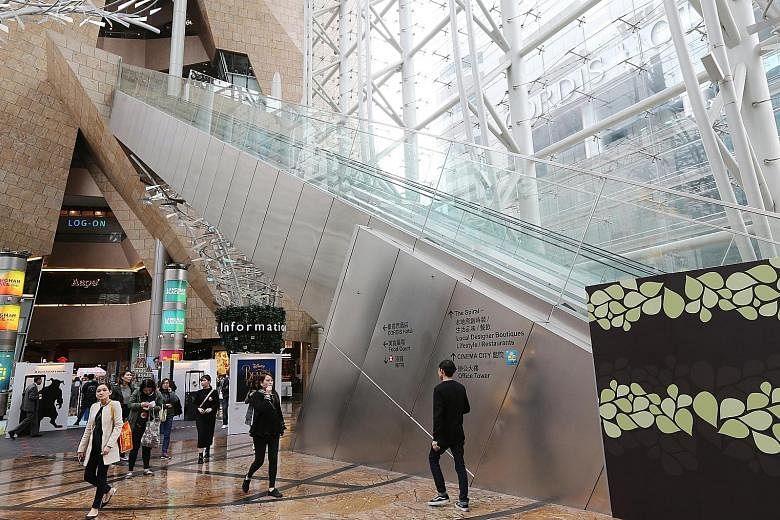HONG KONG • Last week's shocking escalator accident at a busy shopping mall has renewed debate on whether long escalators are more likely to malfunction.
Some experts say such escalators are more likely to do so due to a heavier load, reported South China Morning Post.
"It has become a trend for shopping malls to build longer escalators as a way to speed up customer traffic and avoid congestion," said Mr Ivan Ho, vice-president of the Hong Kong Institute of Architects.
Hong Kongers' tendency to walk on escalators might also increase the chances of accidents.
A spokesman for the government's Electrical and Mechanical Services Department told SCMP escalators are not designed to be walked on.
-
More than 9 in 10 accidents in S'pore due to user behaviour
-
There are more than 6,000 escalators in Singapore. And the Building and Construction Authority (BCA) has said that there were 63 accidents - or about one a day - involving escalators in November and December last year.
The BCA said that 95 per cent of the cases were attributed to "user behaviour".
The causes include escalator users carrying heavy or bulky objects such as luggage and prams on the machines, as well as losing their balance.
Some users also fell due to "inattentiveness, intoxication, being unwell or from leaning against the sides of the escalator", the BCA said in a media release in January.
To promote the safe use of escalators, the authority is working with owners of escalators - including malls, schools and hospitals - to raise awareness through safety posters. The BCA said that about 78 per cent of the escalator incidents involved those above the age of 60.
The Land Transport Authority, together with rail operators SMRT and SBS Transit, is trying out reduced escalator speeds at some MRT stations that are frequently used by the elderly and children.
The BCA last year introduced new guidelines on escalator maintenance, requiring - among other things - that the machines undergo maintenance at least once a month.
Earlier this year, the authorities in China's Nanjing city urged users not to "walk on the left and stand on the right".
"About 95 per cent of escalators have severe damage on their right side. Standing on the right and walking on the left is no longer being recommended," the Nanjing Metro system in Jiangsu province said on its official social media account.
"Standing still and holding onto the handrails are more important," it added.
But some experts say this is unlikely. Engineer Dominic Cher told The Straits Times: "An escalator is just like a travelator, except that one is on an incline.
"If you can walk on a travelator, why not an escalator?"
Mr Cher, an authorised examiner for lifts and escalators, said regularly reversing the direction of an escalator could help address uneven damage. "It's like rotating tyres on a car."
Hong Kong is conducting checks on all escalators with heights of 15m or more across the city.
There are now 65 such escalators in the city, including the malfunctioning escalator at Langham Place shopping mall, which is also the city's tallest escalator.
Mr Eric Pang, assistant director of the Electrical and Mechanical Services Department, said he did not believe longer escalators were more dangerous than shorter ones.
In last Saturday's accident, the 45m-long escalator suddenly reversed direction, sending dozens of people tumbling down the moving stairway, leaving 18 people injured.
Preliminary investigations found that all three of its drive chains were broken.
The drive chain connects the driving gear of an escalator with the wheels of its steps.
If it breaks, a safety device is supposed to stop the escalator.
Mr Pang said in a radio interview: "We found that the driving belt was broken… but the protective device which was supposed to sense and trigger the [BRAKING]system had also malfunctioned, failing to stop the escalator. It was a double mishap and that's very rare.
The last major check on the mall's escalator system was on Jan 21 and the last routine inspection was just two days before the incident.
It is unclear if the drive chains had been part of the routine inspection, reported SCMP.

